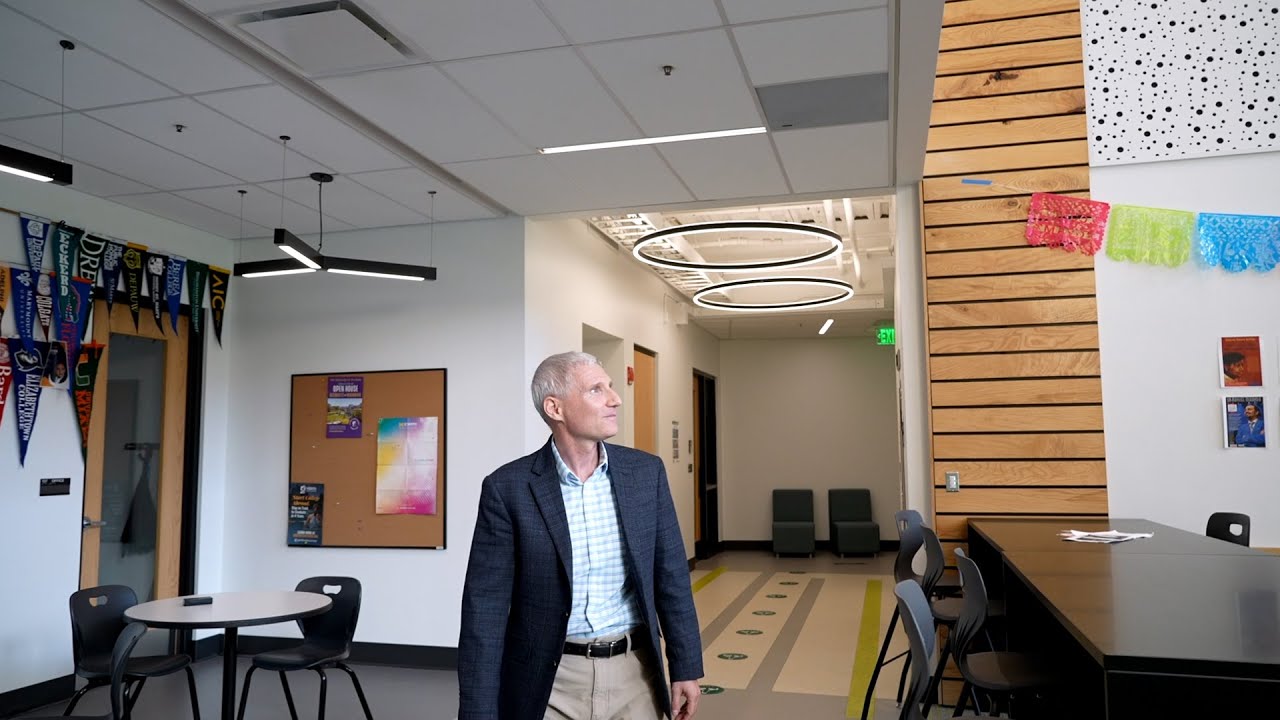The Pen y Bryn Upper School at Sandy Spring Friends School is the first high school in the United States to achieve a gold level certification for the WELL Building Standard.
Created by the International WELL Building Institute, an organization focused on the relationship between design and health, the standard measures how design concepts like air, water, light, and thermal comfort impact overall wellbeing. In the Sandy Spring Friends School, a Quaker school in Sandy Spring, Md., floor to ceiling windows let natural light fill the atrium where students gather in between classes. Each classroom and office space has its own thermometer for temperature control. Even the floors, which were built using specialized materials to reduce reverb, are meant to help foster occupant wellbeing.
“I remember saying that it was like a Netflix movie,” Upper School senior Olivia Liddie said. “Kind of like, you know, how the high schools look like walking in and seeing the colors and the lights.”
The Upper School’s design, which was done by the architecture firm Stantec, was also meant to be representative of the school’s Quaker roots and it was constructed = as part of the school’s strategic plan to upgrade its facilities with new technology.
“When I say we were built on a wellness model, that came from our Quaker identity from the start,” said Dr. Rodney Glasgow, the head of school. “It [coalesces] around Quaker values of simplicity, peace, integrity, community, equality, and stewardship.”
And as the first U.S. high school to be WELL certified gold, the school’s administration isn’t feeling pressured. They’re feeling inspired. For its teachers, a building centered around its occupants’ health and wellness influences the way they teach within its open spaces and glass walls designed for collaboration.
“It’s designed specifically for people to engage, to cross paths with each other, to stimulate cross-departmental collaboration, cross-divisional collaboration, student-teacher engagement and teacher-to-teacher engagement,” Eduardo Polón, the Upper School’s global languages department chair, said.
“It provided a model for our future buildings,” the school’s chief operations officer Lauren Miyoshi said. “What of these technologies and these innovations can I implement in an existing building to cure, maybe, an acoustics problem or to drive better air quality?”
As the school’s chief operations officer, Miyoshi said she’s looking at how to take the lessons she learned from the WELL Building Standard and implement them into the campus’ other buildings without having to build new structures.
“You don’t have to build a new building to make wellness a part of the building you’re in,” Glasgow said. “It just gives us permission to really put wellness at the center of everything we do and everything that we decide.”
source



